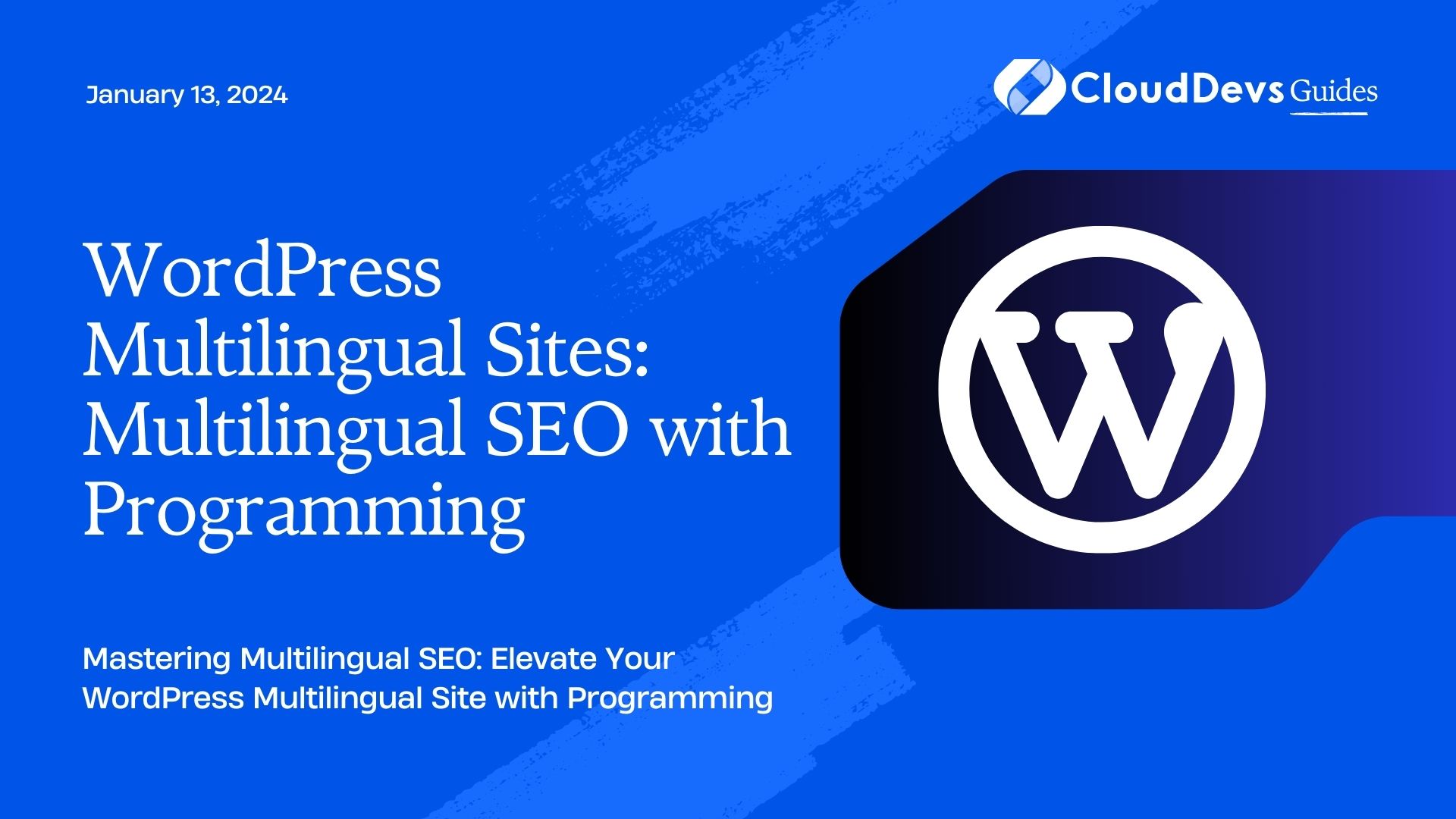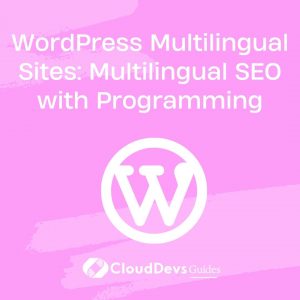WordPress Multilingual Sites: Multilingual SEO with Programming
In today’s globalized digital landscape, having a multilingual website is crucial for reaching a broader audience and expanding your online presence. If you’re running your website on WordPress, you’re already one step ahead. WordPress offers numerous plugins and tools to create and manage multilingual sites. However, merely translating your content isn’t enough to ensure success in different language markets. To truly maximize your WordPress multilingual site’s visibility, you need to combine it with a robust SEO (Search Engine Optimization) strategy. And guess what? Programming can play a pivotal role in achieving this goal.
Table of Contents
1. Understanding Multilingual SEO
Before we dive into the technical aspects, let’s establish a solid understanding of multilingual SEO. Multilingual SEO involves optimizing your website’s content for multiple languages and regions, ensuring that search engines can effectively index and rank your pages in different languages. This involves more than just translation – it requires cultural sensitivity, keyword research, and technical proficiency.
2. The Challenge of Multilingual SEO
Multilingual SEO comes with its own set of challenges. You must contend with language nuances, local keywords, and search trends specific to each target audience. Additionally, search engines like Google use various signals to determine a website’s relevance and rank. This includes factors such as page load speed, mobile-friendliness, and structured data. Balancing all these elements across multiple languages can be complex.
3. WordPress Multilingual Plugins
WordPress offers several plugins that simplify the process of creating multilingual websites. Plugins like WPML (WordPress Multilingual Plugin) and Polylang are popular choices. They allow you to manage translations, language-specific content, and URL structures effortlessly. However, for advanced multilingual SEO, mere plugin usage might not suffice.
4. Leveraging Programming for Multilingual SEO
Here’s where programming enters the picture. By harnessing the power of programming languages like PHP, JavaScript, and utilizing WordPress hooks and filters, you can take your multilingual SEO game to the next level.
4.1. Hreflang Annotations
Hreflang annotations are HTML tags that indicate the language and regional targeting of a webpage. While plugins might help you generate these tags, programming enables you to have precise control. Implement hreflang annotations in your WordPress theme using PHP to ensure that search engines understand your site’s language targeting accurately.
php
<?php
function add_hreflang_tags() {
$languages = array(
'en-US' => 'en',
'es-ES' => 'es',
// Add more language codes and slugs here
);
foreach ($languages as $locale => $slug) {
echo '<link rel="alternate" hreflang="' . $slug . '" href="' . get_home_url() . '/' . $slug . '" />' . "\n";
}
}
add_action('wp_head', 'add_hreflang_tags');
?>
4.2. Dynamic SEO Titles and Meta Descriptions
Search engines consider the title and meta description tags for ranking and displaying search results. However, these tags need to be unique for each language version of your page. Programmatically generating dynamic SEO titles and meta descriptions ensures that your content is optimized for each language.
php
<?php
function dynamic_seo_tags($title) {
if (is_multisite()) {
$current_blog = get_current_blog_id();
$title .= ' - ' . get_blog_option($current_blog, 'blogname');
}
return $title;
}
add_filter('wp_title', 'dynamic_seo_tags');
function dynamic_meta_description($description) {
global $post;
$post_id = $post->ID;
$lang = get_locale(); // Get the current language code
if ($lang === 'es_ES') {
// Implement logic to fetch Spanish meta description for $post_id
// $description = get_spanish_meta_description($post_id);
}
// Add more language cases as needed
return $description;
}
add_filter('wpseo_metadesc', 'dynamic_meta_description');
?>
4.3. Language-specific Sitemaps
A sitemap is a file that provides information about the pages on your site to search engines. For multilingual sites, creating language-specific sitemaps makes it easier for search engines to crawl and index your content accurately. You can use programming to generate and update these sitemaps dynamically.
php
<?php
function generate_language_sitemaps() {
$languages = array('en', 'es', 'fr'); // List of language slugs
$sitemap_base_url = get_home_url() . '/sitemap';
foreach ($languages as $lang) {
$sitemap_url = $sitemap_base_url . '-' . $lang . '.xml';
// Generate the sitemap XML for each language and update it
// Use tools like Yoast SEO or Google XML Sitemaps to help with this process
}
}
add_action('wp_cron', 'generate_language_sitemaps');
?>
5. Testing and Validating
As with any programming endeavor, testing and validation are crucial. After implementing these techniques, use tools like Google Search Console and Bing Webmaster Tools to ensure that your multilingual SEO setup is working as intended. Monitor indexing status, crawl errors, and structured data issues across different language versions of your site.
Conclusion
WordPress multilingual sites have the potential to significantly expand your online reach. However, the true power of these sites is unlocked when they are optimized for search engines in multiple languages. By delving into programming and employing PHP, JavaScript, and WordPress hooks and filters, you can take control of your multilingual SEO strategy. From hreflang annotations to dynamic SEO tags and language-specific sitemaps, programming empowers you to fine-tune every aspect of your multilingual site’s SEO performance. So, don’t settle for basic translations – code your way to multilingual SEO mastery!
Remember, mastering multilingual SEO is an ongoing process. Keep yourself updated with the latest SEO trends, search engine algorithms, and WordPress updates to ensure your multilingual site continues to thrive across different language markets. Happy programming and optimizing!
In conclusion, combining the power of WordPress’s multilingual plugins with programming expertise can propel your multilingual site’s SEO to new heights. The technical implementations discussed here, from hreflang annotations to dynamic SEO tags and language-specific sitemaps, empower you to fine-tune every aspect of your multilingual site’s performance in search engines. So, embrace the programming side of multilingual SEO, and watch as your website connects with audiences worldwide in ways you never thought possible.
Table of Contents








